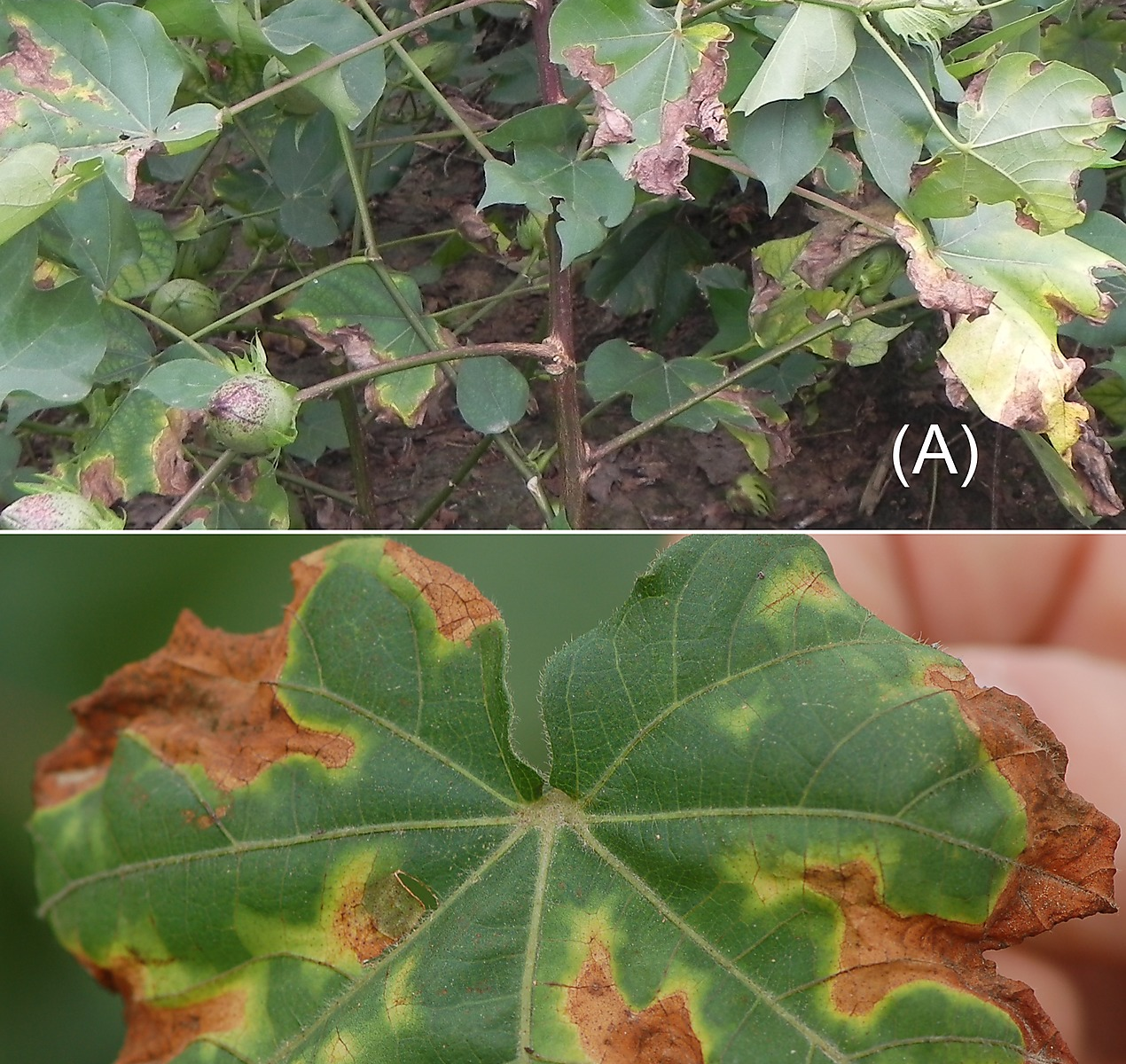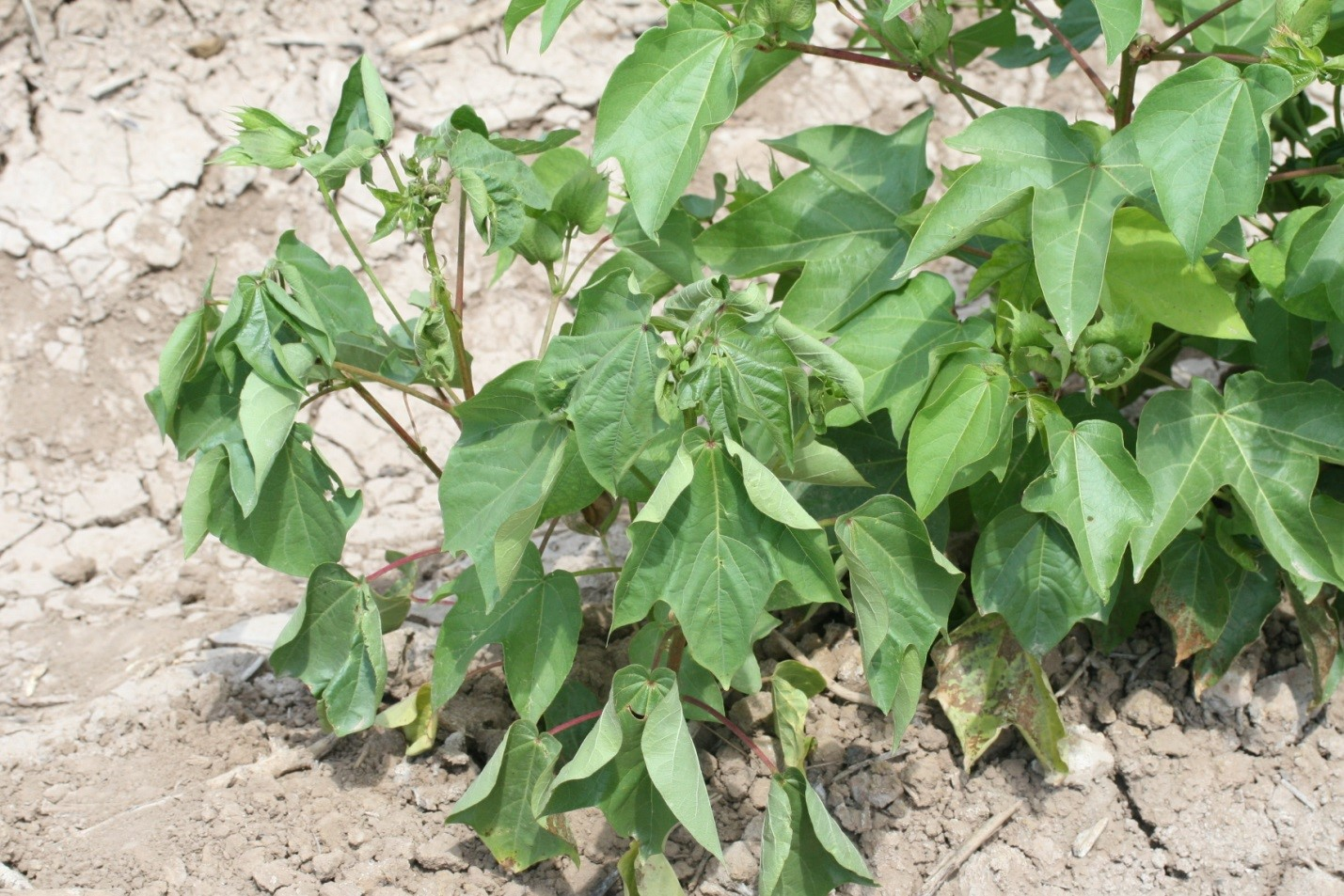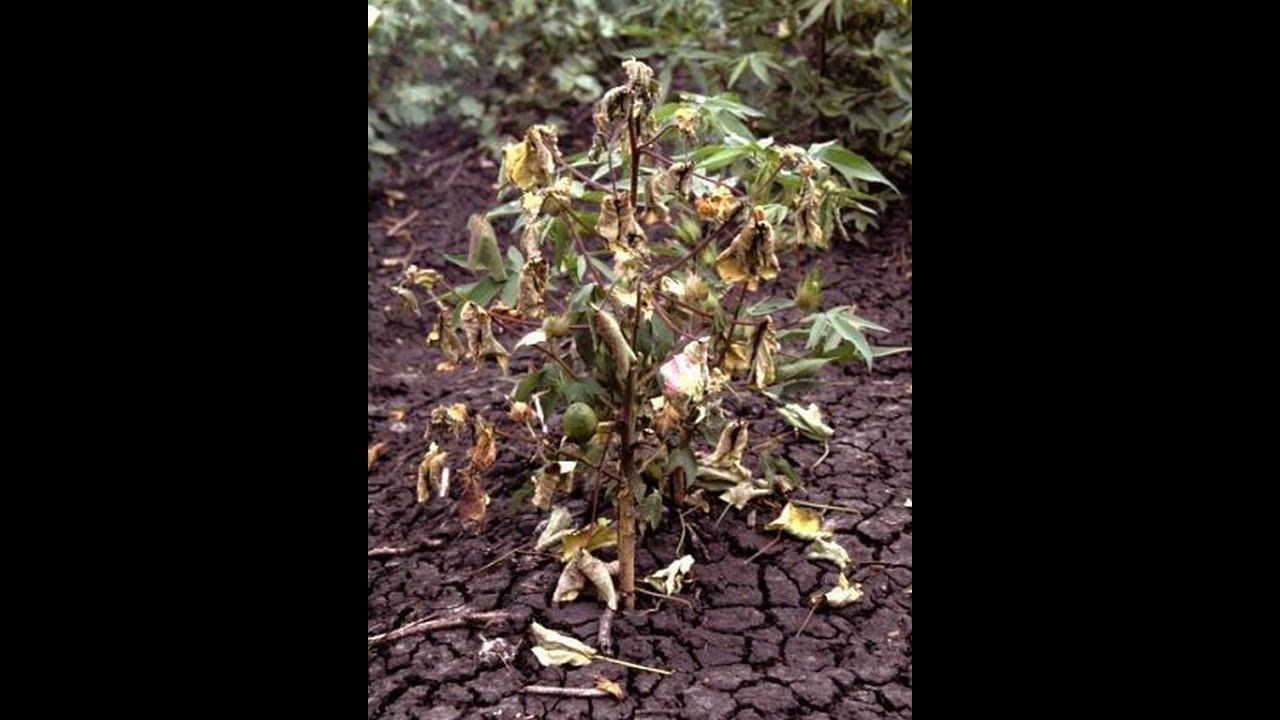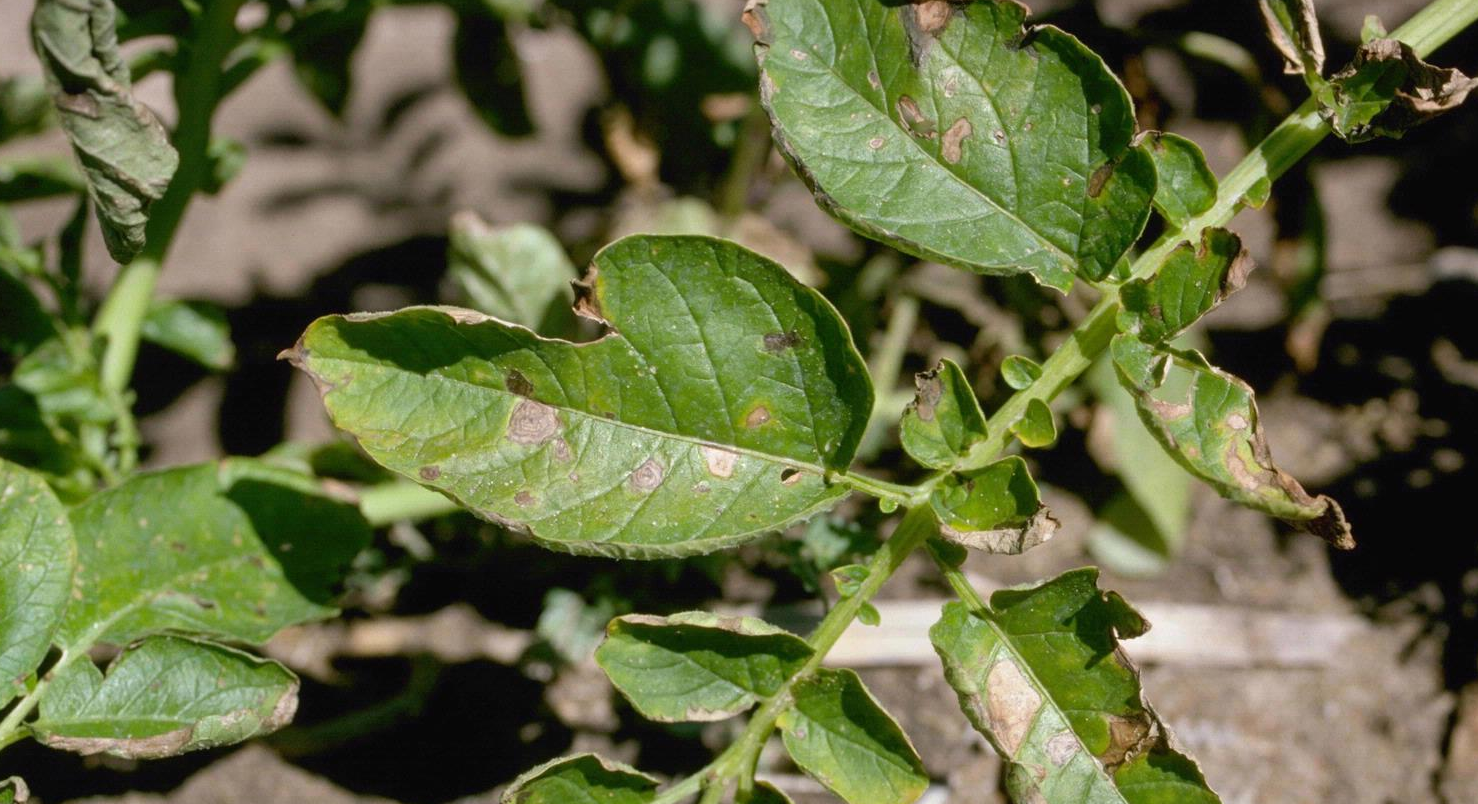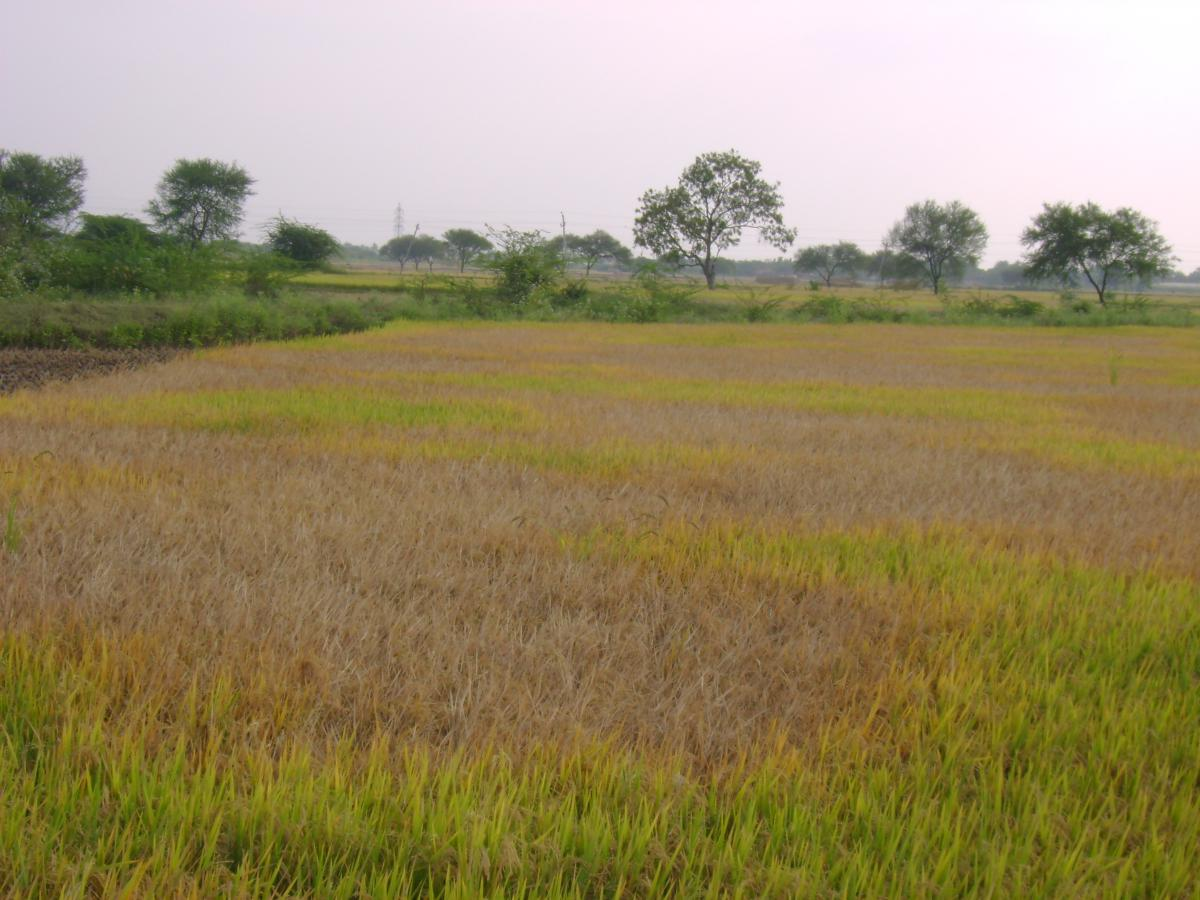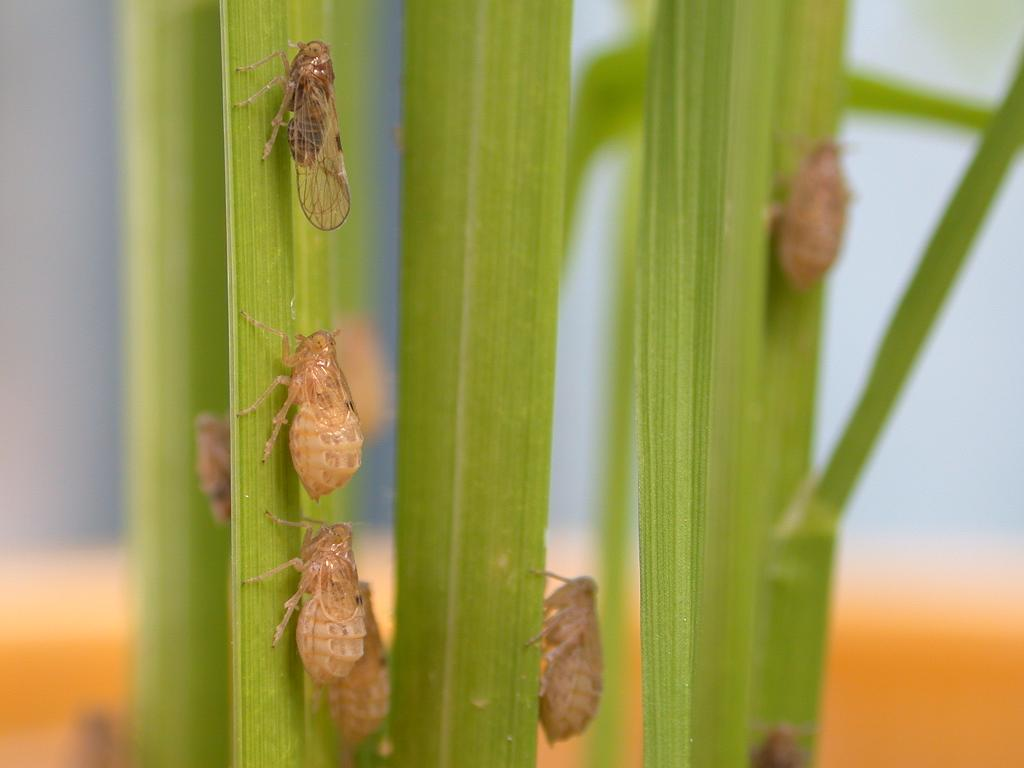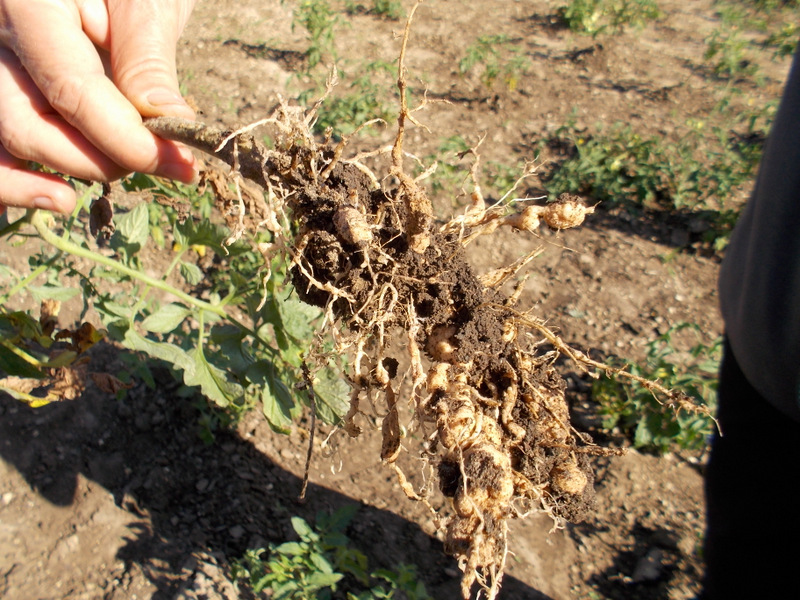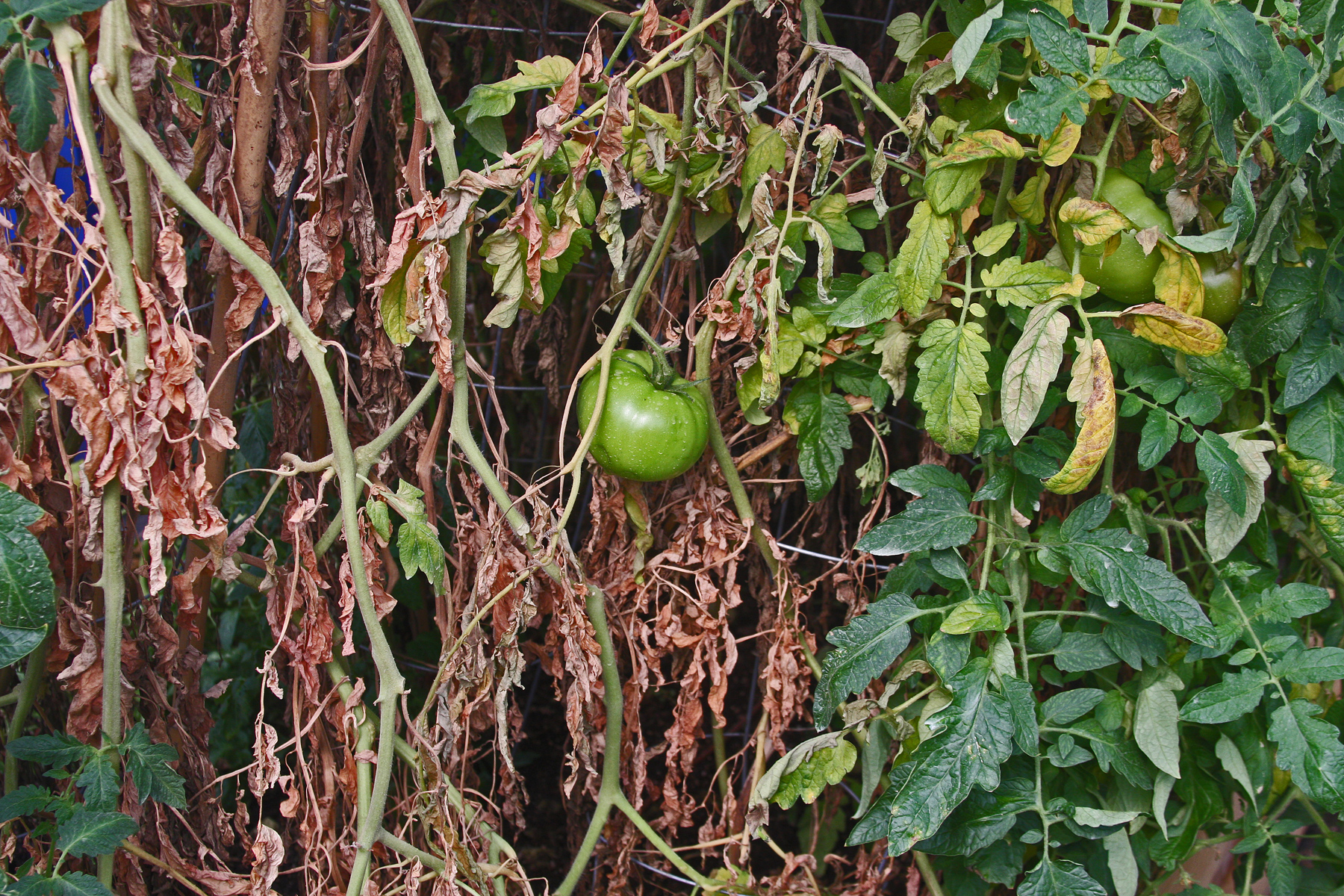- Plants infected at early stages are severely stunted.
- The first symptoms can be seen as bronzing of veins.
- It is followed by interveinal chlorosis and yellowing of leaves.
- Finally, the leaves begin to dry, giving a scorched appearance.
- At this stage, the characteristic diagnostic feature is the drying of the leaf margins and areas between veins, which gives a “Tigerstripe” or “Tiger claw” appearance.
Share

